Your Planets
Portraits of the Planets
Aspects between Planets
The planetary ages
The planetary families
Planets in Signs
The Planets in comics


What is designated here by the term “traditional astrology” covers the body of knowledge which is common, with a few variations & exceptions, to most currents and schools of Western astrology with the exception of conditionalist astrology. (R. P.).
Free analogism. Everything corresponds without the need for causal relations. What is above is below, and vice versa.
The annual Earth-Sun cycle induces a tropical zodiac comprising twelve sectors (Signs) due to the intrinsic quality of this figure, or 36 decans (three per Sign) by an internal application of the ternary.

Second geo-solar reference: the meteorological principles of Hot, Cold, Dry, Wet. The first two combined with the other two give the four characteristic couples of the four seasonal fourths and of the Signs with a variation of dosages.

The fourth Elements from the weather pairs, Earth, Water, Air and Fire are assigned a Cardinal, Fixed or Mutable state, depending on the situation of the Sign (beginning-middle-end) in the internal cycle of the season.

The binary principle intervenes for an alternating distribution of the positive (diurnal, masculine) and the negative (nocturnal, feminine), from Aries, the first sign of the zodiac and of positive polarity.
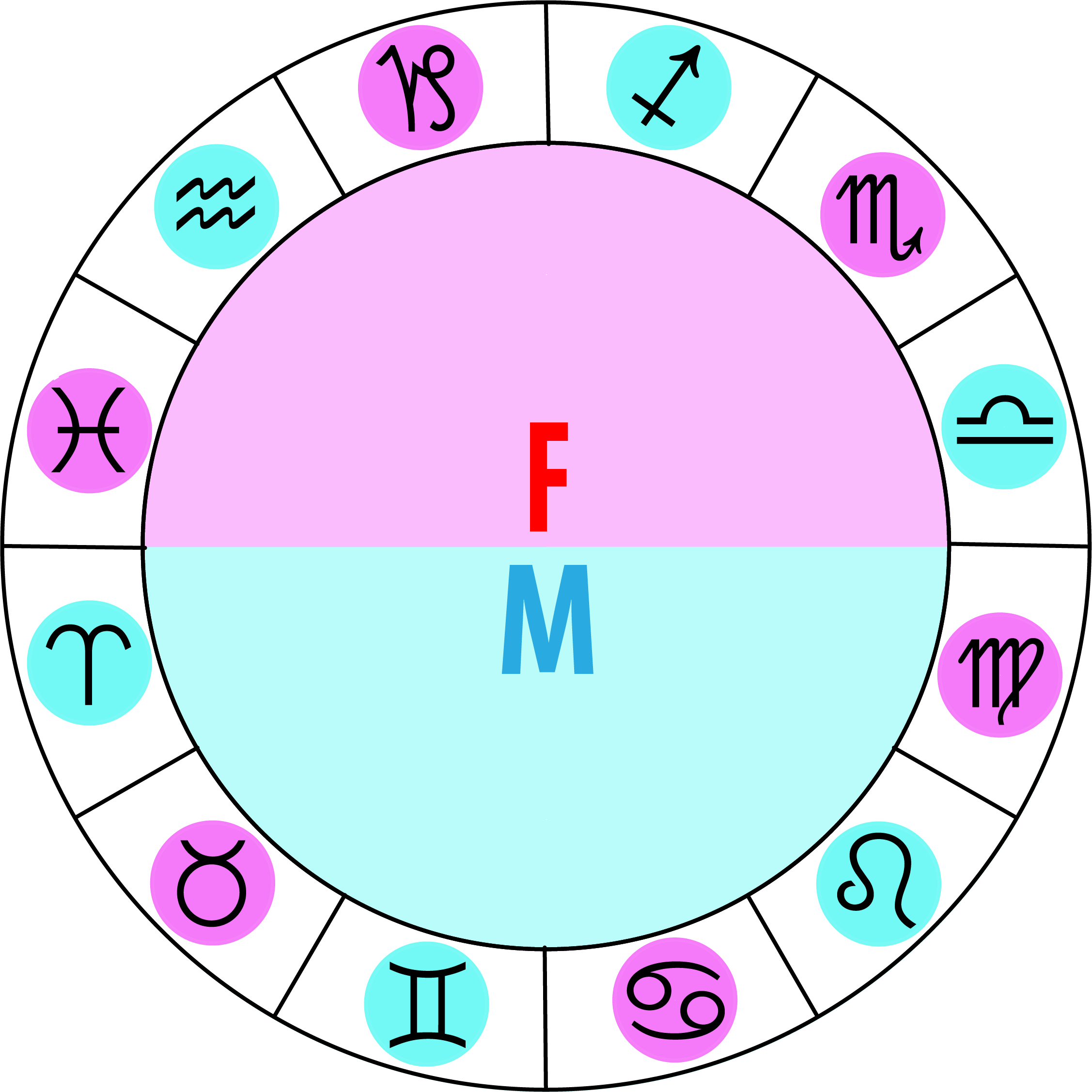
This zodiac syncretizes numerological and meteorological references erected into Principles, the essence merging with the manifesto. The planets, foreign to the definition of the Sign, undergo the law of a Sun that is neither abstract nor concrete, by crossing the Signs. even though seasons cannot be evoked for them, their effects are modulated by the elementary qualities that the Sun imparts to the Signs by analogical means.


The system of Rulerships or distribution of planetary dignities on the Signs proceeds from the same syncretist thought by converting, at an unforeseen moment, an astrometric reference into a metaphysical principle. For example, the domiciles (main dignity of a star in a Sign) are inspired by the order of the angular velocities of the stars from the couple of luminaries (Moon in Cancer and Sun in Leo) but, then, the process affects a uniform extent of 30° to stars whose ratio of speeds has nothing constant and comparable.
The constellations (sidereal zodiac) are added or excluded from the tropical Zodiac. Some take into account the two zodiacs by treating them on distinct planes (constellations for collective destinies, signs for individuals), others retain the tropic against the sidereal or the sidereal against the tropic. The astrometric justification of the sidereal zodiac not being obvious, generally this zodiac goes hand in hand with a radical symbolic-spiritualist option: the Constellations received at the right time the titles, forms, designations, which the Creator had designed for them. Where is the problem? There is nothing to explain. Astrology proceeds here directly from the supernatural, without amalgamation.
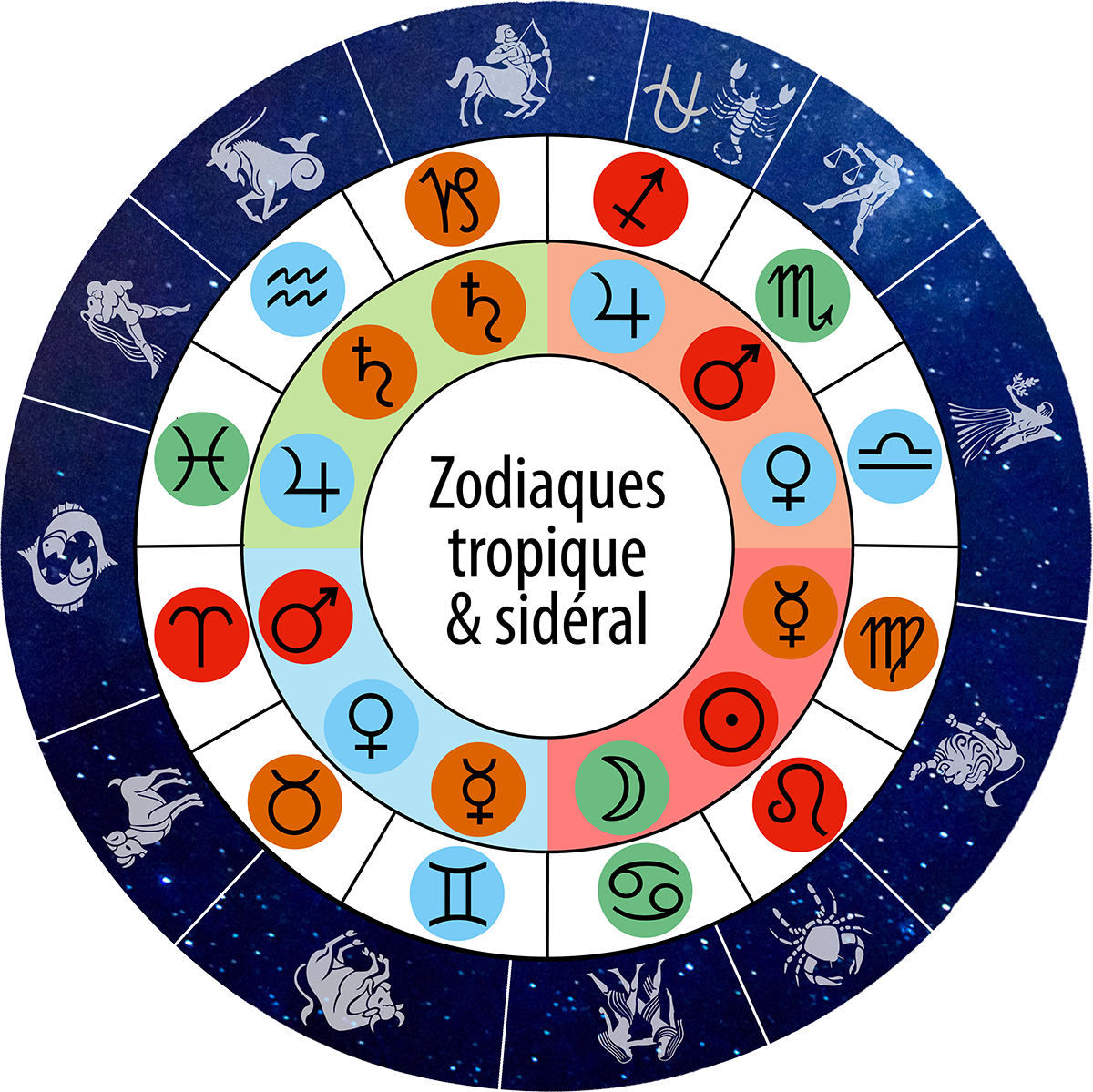
The tropic zodiac of the Elements takes center stage in the West. The four principles date back to Aristotle and Ptolemy who used them in a vision that was both physical and philosophical. Today, they are reserved for a version that calls itself metaphysical while applying to the four Hippocratic temperaments, adapted to modern temperaments. Incidentally, I point out that Hippocrates was a positive spirit, an experimental scientist who gave precedence to the brain more than to moods, and one gains to know his work (3) before reading users who do not seem to have taken this penalty (4).
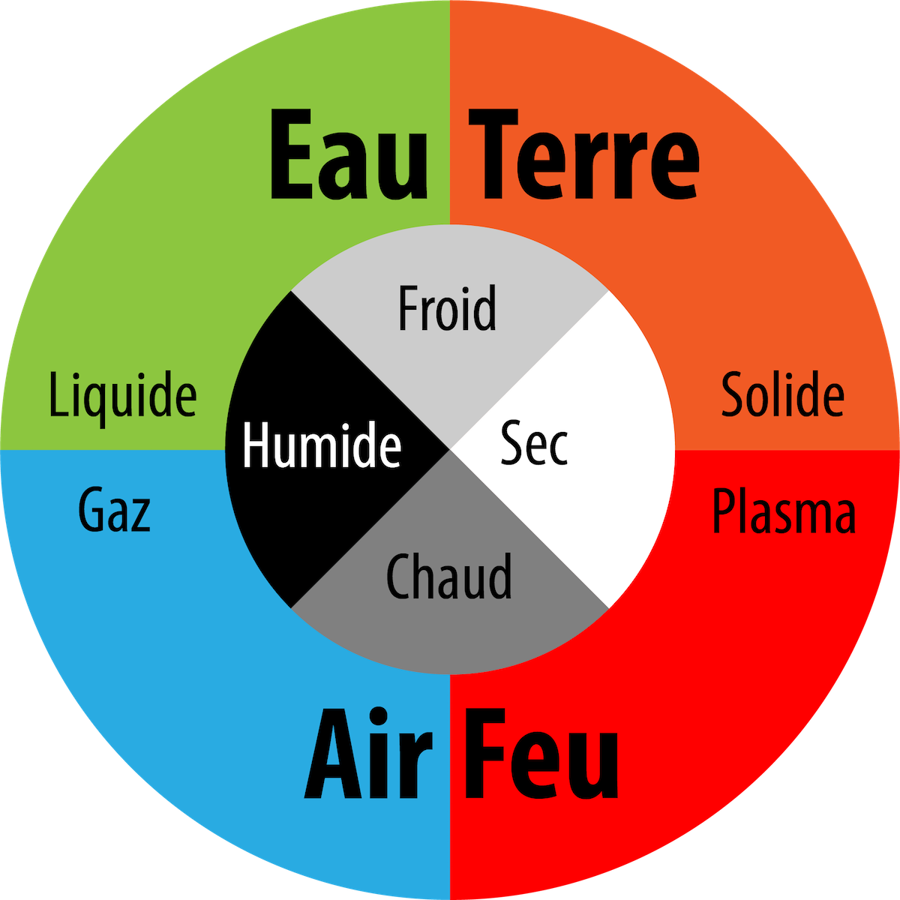
From Hippocratic temperaments, astro-psychology has extended to all typologies: Le Senne, Jung, Freud, among the dominant ones. The authors of these extensions are generally unaware of the fact that they have masked with false victories the failure of their search for a specifically astrological thought. The correlations endorsed by free analogism attribute, for example, the Taurus oral complex because this Sign rules the throat, the anal complex in Virgo and Scorpio for their rules over the intestines and sphincters. When is the knee complex for Capricorn? But it must be said that the total absence of system and unity passes for a guarantee of authenticity. Have we not spoken against the reflexological zodiac its too logical and systematic aspect?
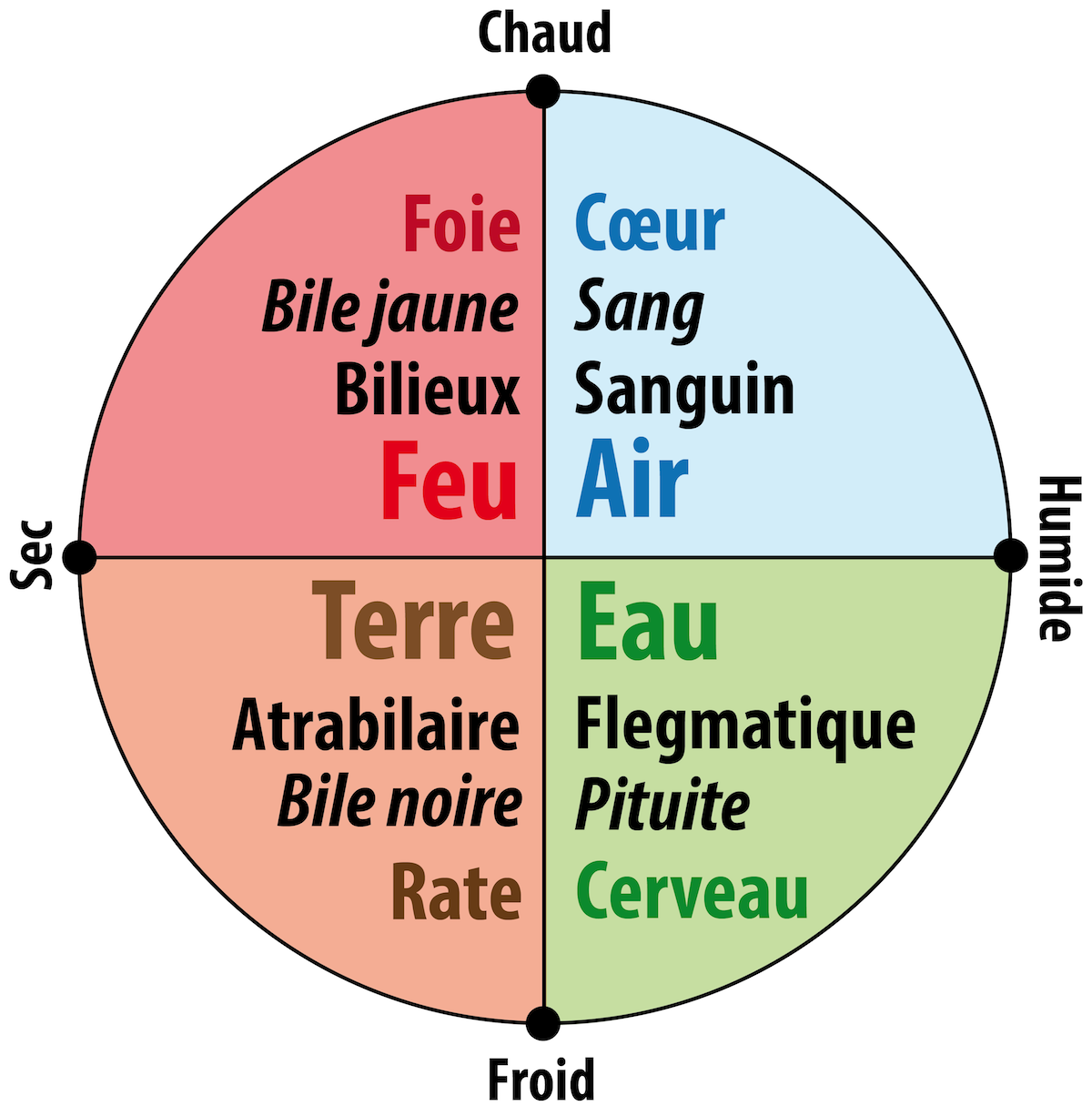
Psychological applications go hand in hand with the predictions of events and climates obtained by forecasting methods natural or symbolic, indistinctly. Here too, it is important not to be logic. It hinders the good interpreter.
Personal practice, biographical studies, statistics. The absence of unity, coherence, common reference to clear concepts and precise formulas does not allow the communication and exchange of results. Each practitioner having chosen his or her zodiacal typologies, cannot enrich his experience with that of colleagues with different predilections.
The intellectual benefit of statistical results is more than uncertain. The Gauquelin’s work are negative for the zodiac. The reduced statistics of professional or amateur astrologers seem to suffer from methodological errors.
Currently, it remains to study Hans Eysenck’s survey of extraversion and introversion by establishing a dominant of positive signs for the extraverted attitude, a dominant of negative signs for the introverted attitude.
No prospect of qualitative development: symbolico-magist astrology has no obstacles to overcome, no problem to solve. She is. Its extension is done by annexing new objects, new typologies. Always self-service, its zodiac can increase with heterogeneous contributions that will only obscure the real foundations of astrology and exorcise the true traditional spirit: spirit of unity and homogeneity.
Free analogism and Greek mythology. Contradictions with other mythologies are not part of these references.
The planetary cycles (durations of sidereal revolutions) have many followers. This reference was used by C. Ptolemy in his theory of “Arbiters of Time”, referring to the durations given to the stars according to the astronomical knowledge of the time. Geocentrism and epicycles granted durations of 4 years to the Moon, 8 to Venus, 20 to Mercury, 19 to the Sun, 15 to Mars, 30 to Saturn and 12 to Jupiter. More outdated than traditional, our astrologers have maintained these durations while knowing — sometimes — in what spirit Ptolemy ordered them.
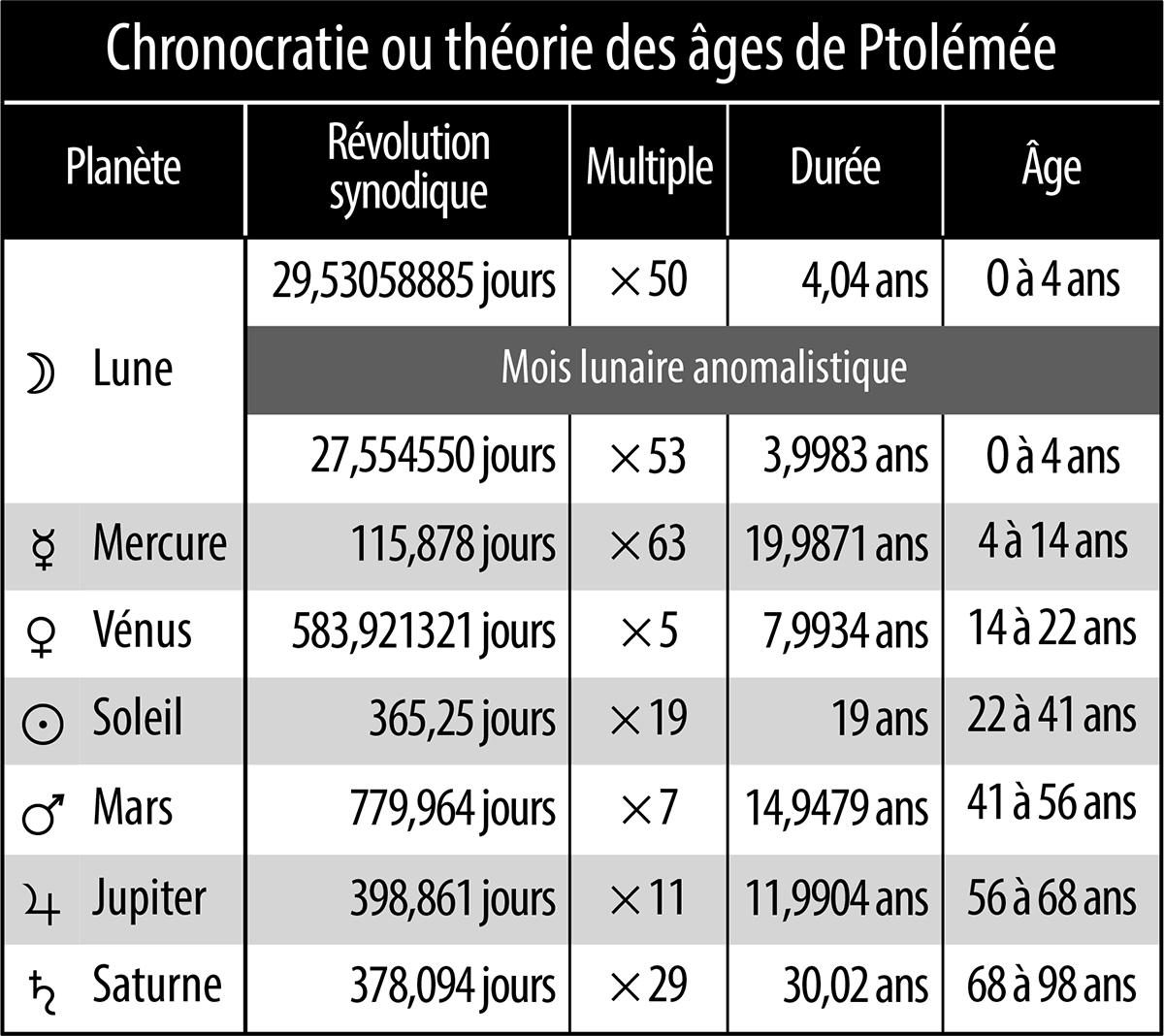
Astrometry superficially comes into play in considerations of brilliance, color, or those interpreting the curves given by the apparent movement of the stars. Through the Rulerships, the planets also inherit the elementary qualities of their favorite Signs.
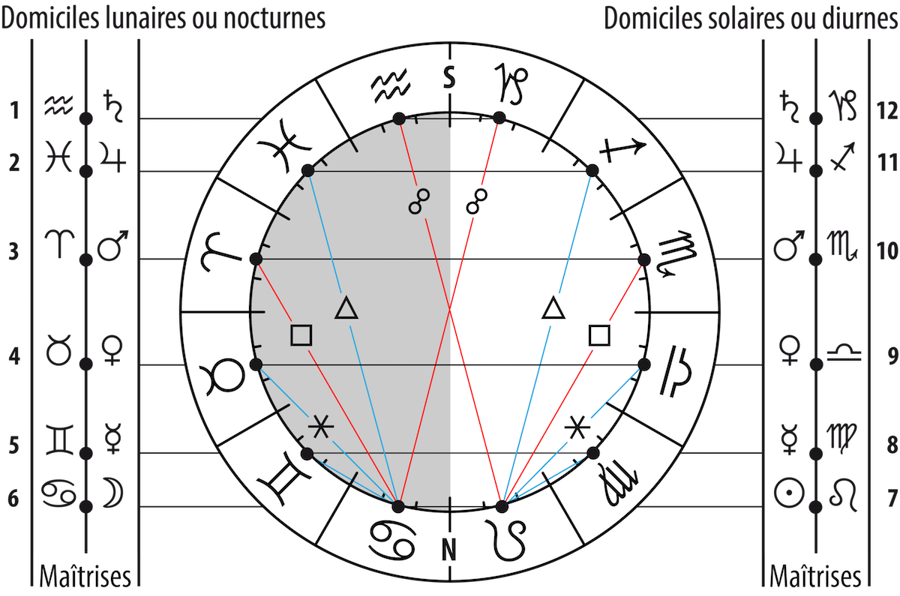
Numerology is concerned with the rank of the planet in the scale of apparent speeds or with affinities of meanings between the numbers and the characters of the mythological gods. Hence a plurality of attributions. In the West, Greek mythology stands out as the great purveyor of types, complexes and hypothetical stars. The multiplicity of gods demands—if only out of democratic sense—new planets in the sky. Moreover, the invisibility of the gods associated with that of the planets allows the introduction of immaterial or imaginary factors, the difference between the two not being very important. Graphic symbols (ideograms) also form a supporting medium for planetary meanings.
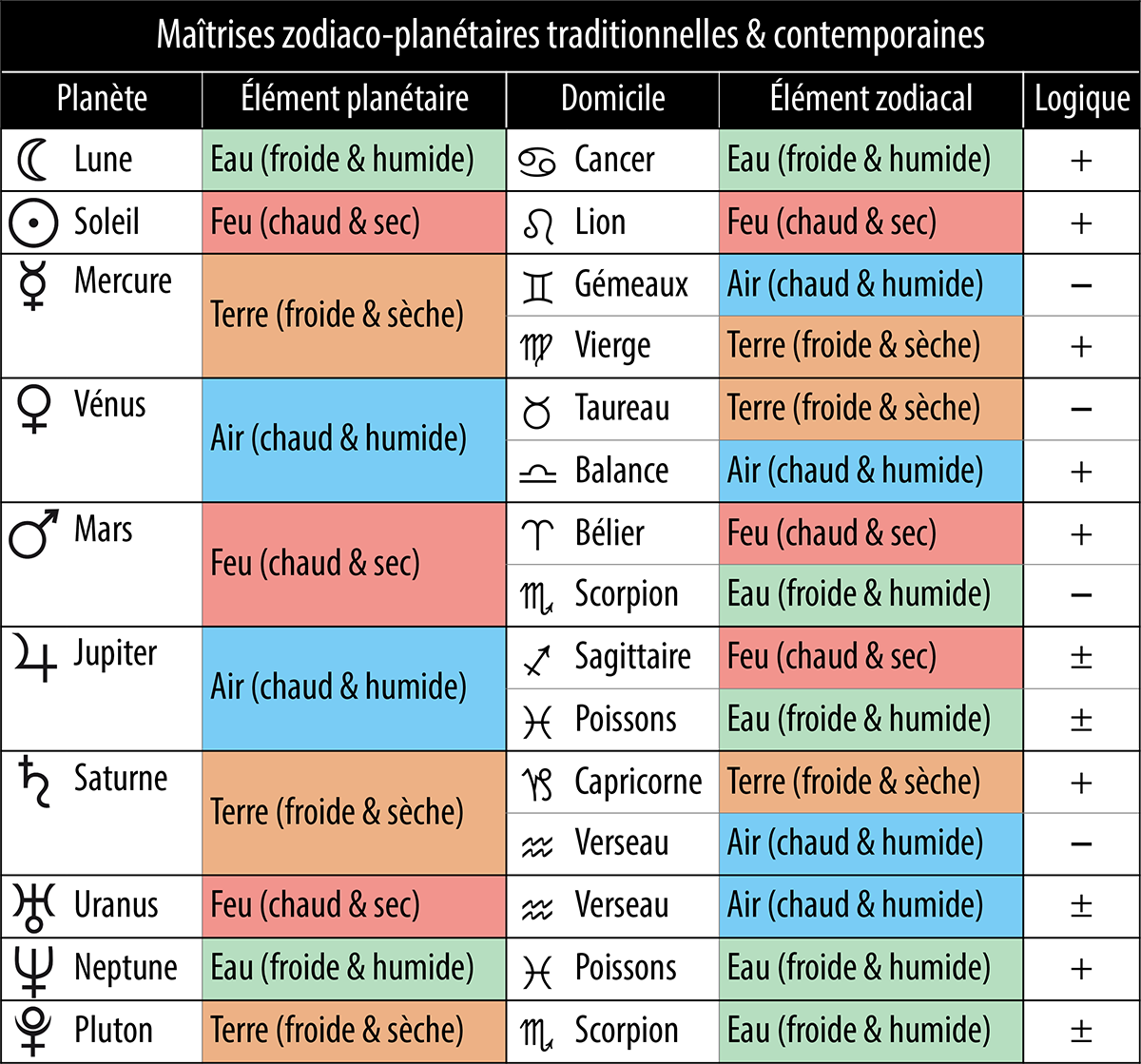
speculative, philosophical or psychological. They relate to all branches of individual or collective activity. As with the Signs, in practice the planets are related to typologies and various psychoanalysis. In France, the Freudian orientation benefits from an expanding audience towards Italy. The correlations are made by free analogism in the mythological setting. Saturn rules the “withdrawal complex” because of the scythe of Chronos. Pluto, god of the underworld, presides over the death instinct: CQFD. No problem for the sequel: Venus the pleasure, Mars the aggression, Jupiter the power, etc. The disparity of criteria leads to curious associations: Saturn, co-related to weaning, still governs old age. Mars, assigned to the dental stage, comes in the government of the ages after the twentieth year. Let us not forget that according to this astrology, there is indeed a “time for everything”.
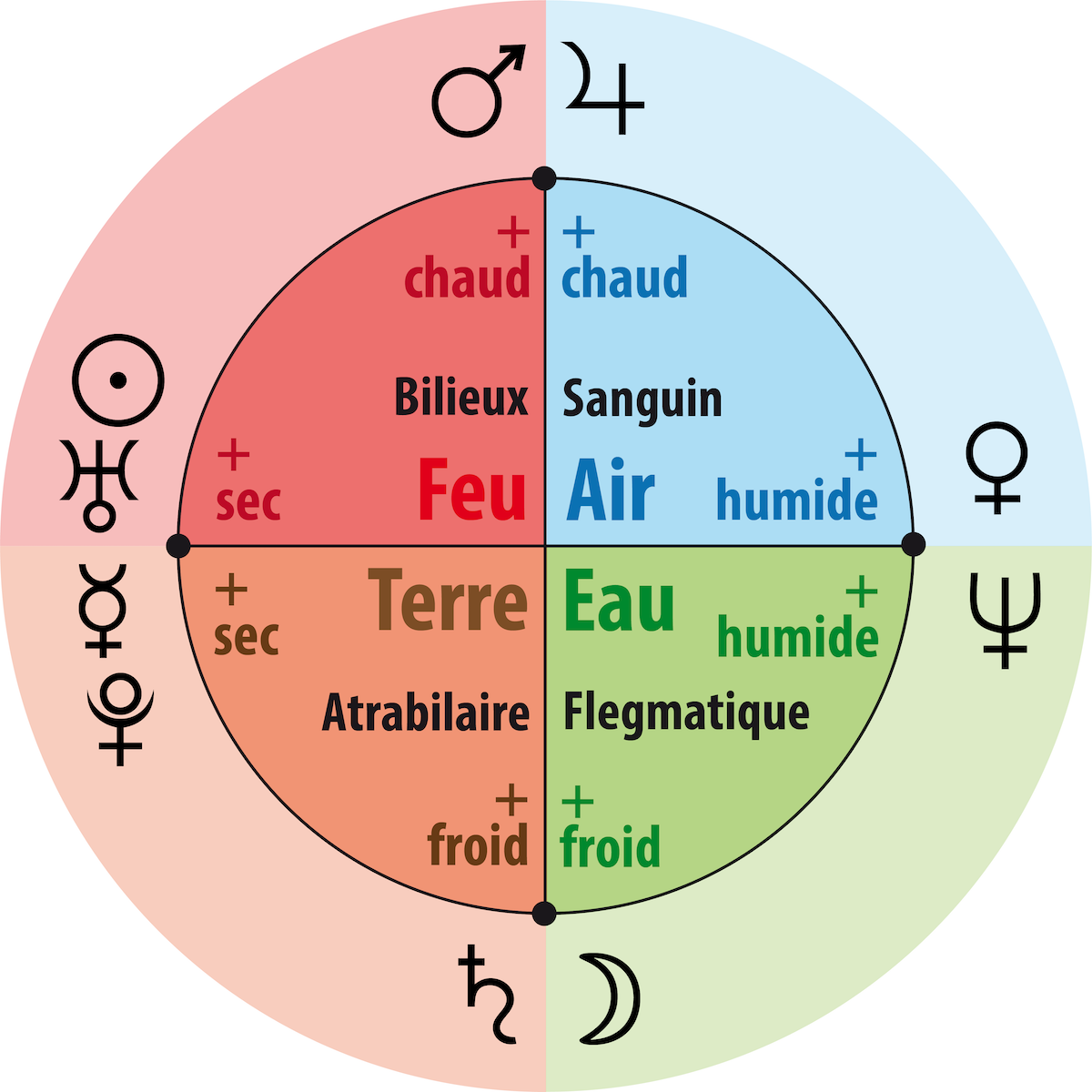
The whole is supported by the doctrine of “signatures”. Each individual “sign” by one or more planets receives at birth the links of its analogical correspondences. The notion of personality disappears in favor of “type”. It is enough, in the interpretation, to enumerate the number of signatures and to distribute in time and space the “kinds” that we carry within ourselves.
Personal practice, biographical studies, statistics. The works statistics of M. Gauquelin, based on large and varied samples, have confirmed the action of five planets out of the ten appearing in the orthodox horoscopes. After the Moon, Jupiter, Saturn, Mars, tested by the professions, Venus appeared at the level called “hereditary”, that is to say in the comparisons between parents and offspring.
Although these statistics are unfortunate for magico-symbolist astrology, the leaders of it have made it a banner, contrary to an author who uses his figures against all astrologism.
The same as for the zodiac and the planets.
At least two sources of meaning: the symbolism of space (little used) and the correspondence with the Signs. The numerical order of the Houses is identified with the numerical order of the Signs to the detriment of the real as much as of analogism. While the Signs, from Aries, progress towards a maximum of heat (Cancer-Leo) or daytime culmination of the annual cycle, the house numbering, operating in the opposite direction, passes from the Rise (Ascendant) taken as its origin to nocturnal Houses, to go towards House IV, the Midnight of the daily movement. It follows, to cite only one spectacular fantasy, that the Sign of Capricorn, cold, nocturnal and saturnian in the annual cycle, is in correspondence with House X, the diurnal and hot Noon of the daily cycle.
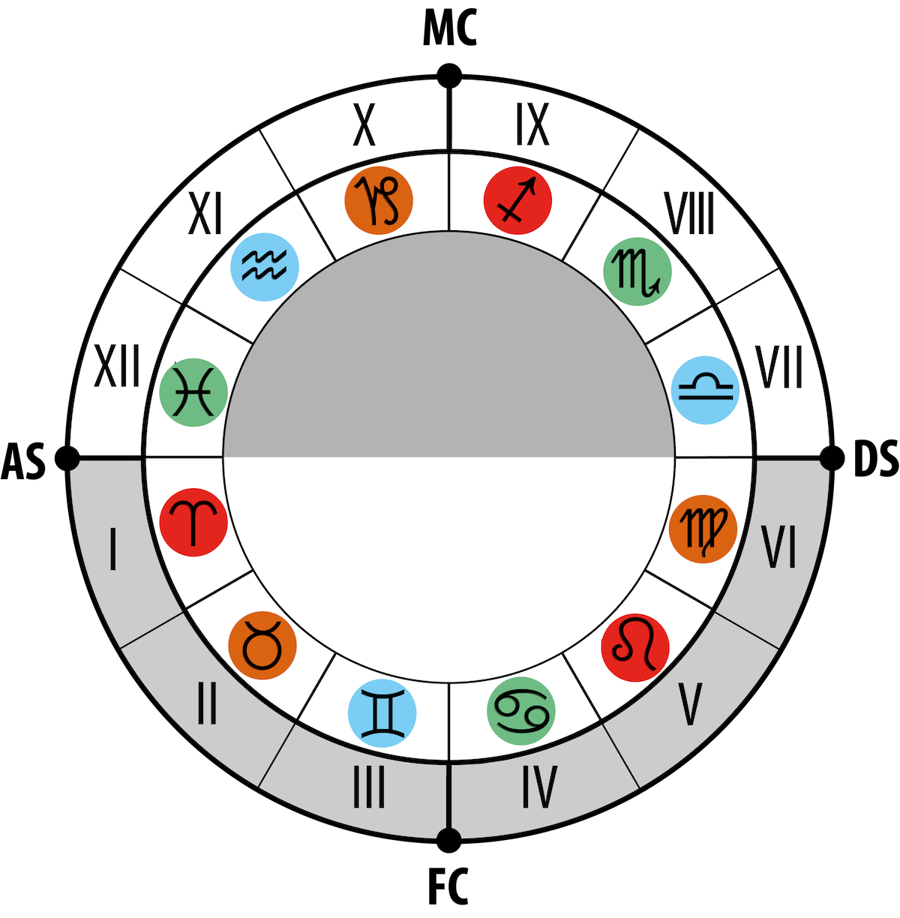
For the Houses, astrometric references used entail various methods of dividing the local sphere into twelve sectors. Depending on whether space or time is divided, according to the projection plan adopted (ecliptic, equatorial), depending on the astrometric circles that we give ourselves, we obtain different extents. Each practitioner is satisfied with his choice. The innovations regularly proposed to clean the colossal jumble of houses never bothered anyone. A cautious minority distrusts the Houses. A large majority adopt silence by persevering in their first choice, the best distributed Tables outweighing the less known. Finally, few beginners are aware of the existence of several house systems and who can take the measure of the a priori of their training.
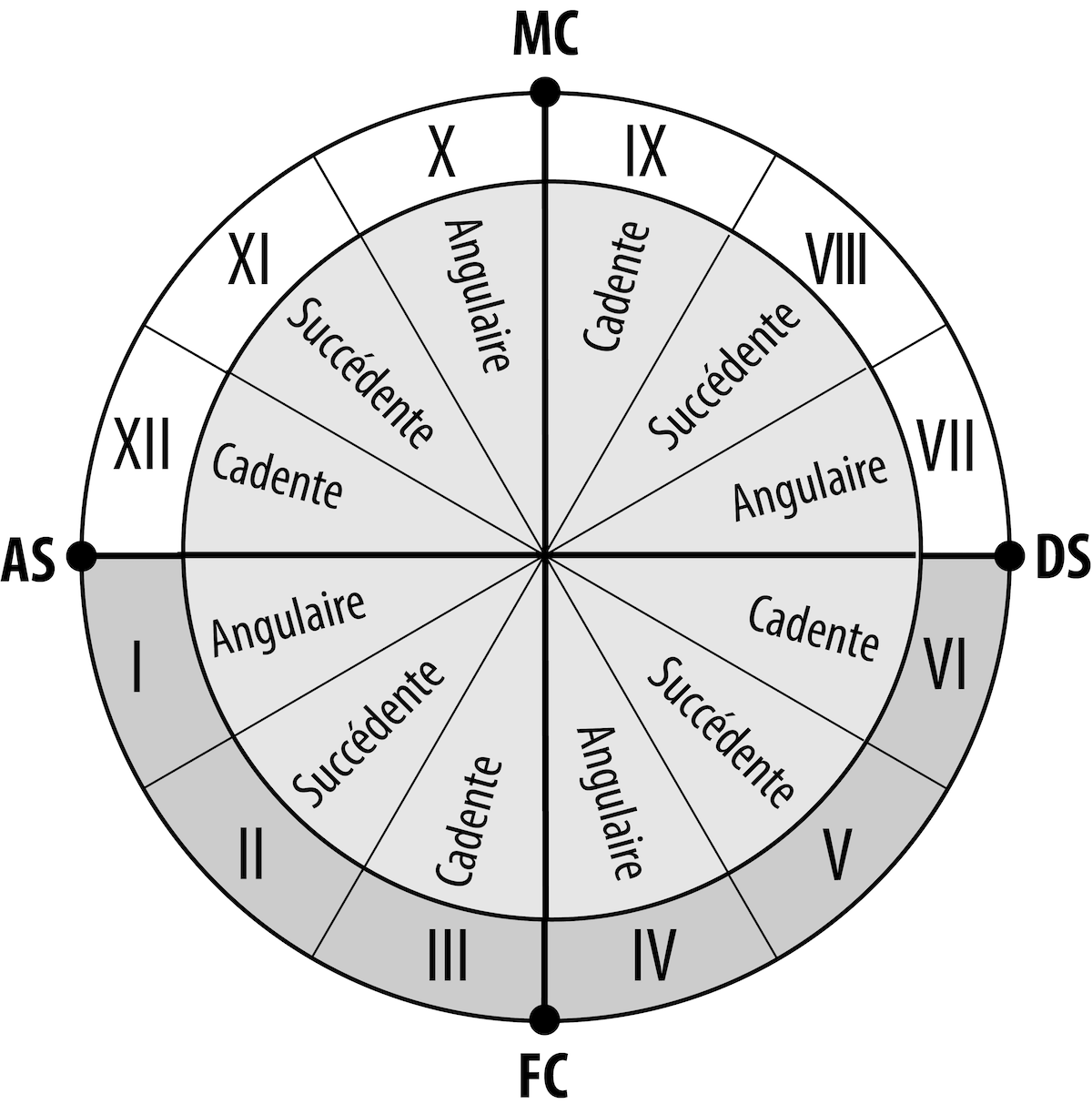
They relate preferably to events, the Houses theoretically concretizing the planetary principles. However, there are many psychological and philosophical transcriptions establishing classifications by formal categories. M. Gauquelin’s statistics, although negative as to the meanings of the Houses and their locations (for example, the influence of the Ascendant is moved to House XII) have not discouraged bold innovators. Some practitioners combine the Old and New Testaments by interpreting the XII both in terms of personality (basic signature) and tests.
Personal practice as an amateur or professional, biographical studies (?). There are few demonstrative statistics of the role of the Houses. This field lends itself, by way of compensation, to the citation of representative examples, often the same and always favorable. Negative cases are not reported. Astro-psychology abhors the negative and polemics. To face an obstacle, a counter-test, an adversary, you need a good foundation in reality. The field of meanings covered by a symbol — what about several! — is still broad enough not to be invalidated. A cluster in House IX which does not travel (meaning controllable by contemporary statistical methods) can be lived, according to the symbolism, by an important dream life or by unrealized religious inclinations (meanings less controllable).

The supporters of this school expect a system of Houses which will bring them out of the overflow by an indisputable superiority. But symbolist laxity justifying all possibilities, the election of such a system is not for tomorrow. In this context, the situation can only get worse with the creation of other systems, always uncontrollable and therefore satisfactory.
Free analogism.
The phases of the Sun-Moon cycle constitute, with the relations between Signs, the references specific to the justification of the aspects. These preferred angles become effective from margins (orbs) variable according to the authors. The measurement of these orbs not resting on any possible analogical criterion, the proposals are abundant and contradictory. Some have proposed to take into account the division of the Signs to put a semblance of order in the determination of the aspects. The orbs expand if the aspects relate to Signs in harmony with regard to their situation in the zodiac and their elemental qualities. These orbs diminish or disappear with aspect if the Signs are incompatible or unrelated in the division of the zodiac into 30° arcs. For example, an angle of 180° linking a planet at the end of Pisces to another at the beginning of Libra becomes a negligible opposition, the Signs not being face to face in the zodiac.
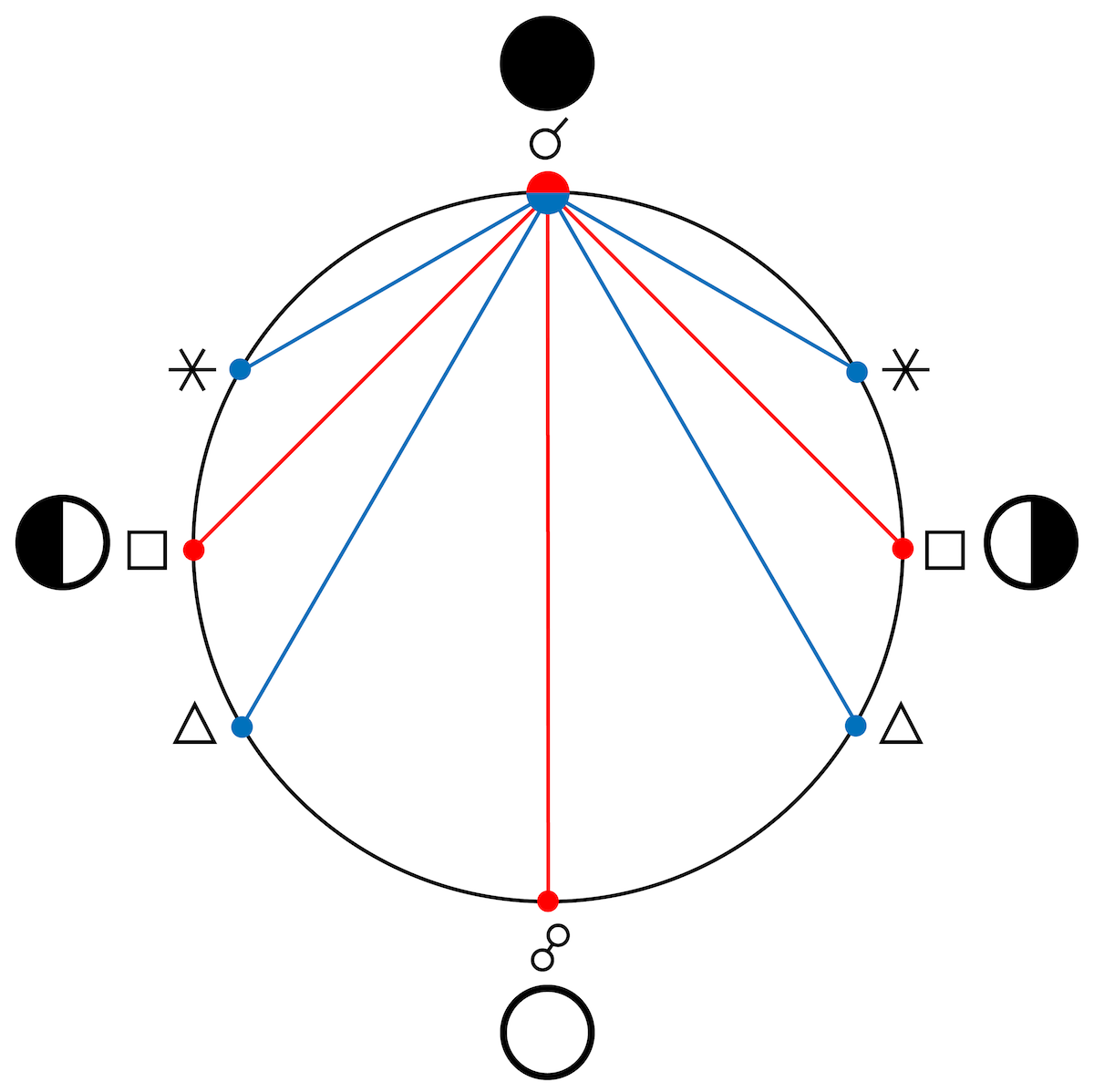
The process contradicts the reference to the lunar phases which increase or decrease without making sudden jumps. The analogy referring to the phases of light is compatible with the difference in meaning between conjunction (new Moon, darkness) and opposition (full Moon, maximum lunar light). The reference to the tides, on the other hand, is aberrant. Sun-Moon conjunctions and oppositions produce the same effects in this respect.
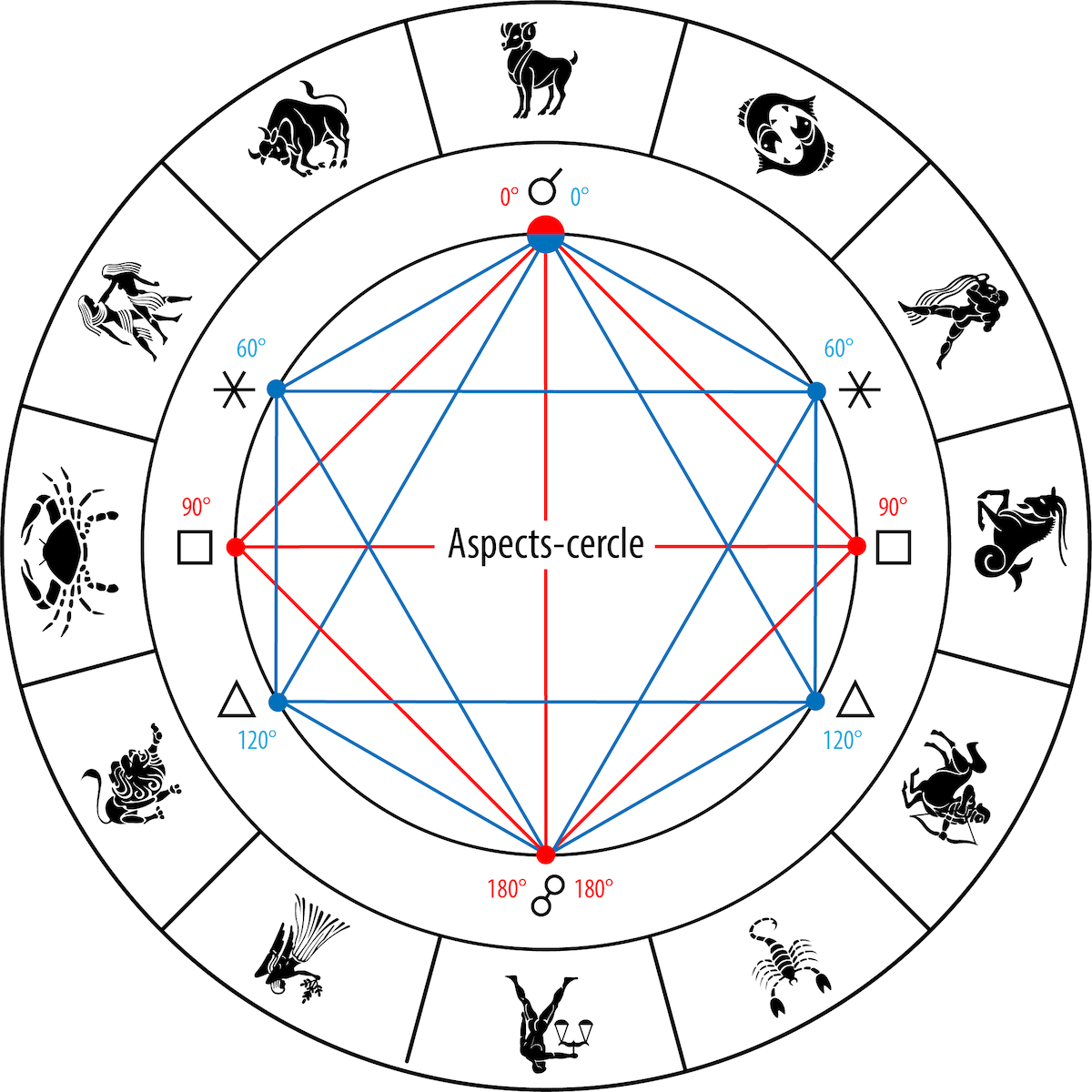
Spatial analogies (symbol of face to face in opposition, of meeting in conjunction) may or may not be combined with those of regular geometric figures obtained with the first whole numbers. We jump from one reference to another. The number ‘4’, Emperor of the Tarot, is stabilizer, builder, organizer in the general symbolism which often associates it with Jupiter, it becomes square, conflict, dissociation, test in the symbolism of the aspects…
They vary according to the quality given to the major aspects. If we use the simple categories of beneficial and malefic, for divinatory astrology, the malefics testify to accidents, constraints, karmic trials in accordance with the errors, faults, moral deficiencies acquired or not acquired in the reincarnationist course. For the astro-psychological school, dissonances are not necessarily evil. They testify to conflicts that may have been compensated or sublimated. Harmonic aspects are not necessarily beneficial. They combine the planets in a peaceful mode that can be softening. Some schools neglect the planetary rulerships in the interpretation of aspects or make moderate use of them. Others do not conceive of this practice without that of mastery.
Aspects are essential for predictive, natural or symbolic methods. Astro-psychology has not highlighted the relationship between static astrology and dynamic or predictive astrology, the two practices are, on the contrary, considered to be fundamentally distinct.
Personal practice as an amateur or professional, biographical studies, statistics. Those of M. Gauquelin give nothing. Seriously bare biographies irremediably invalidate the negative character of the dissonant aspects and especially their moral interpretation. As for the practice, to judge its scientific value, it would be necessary, here more than elsewhere, to first test the critical sense and the qualities of judgment of the practitioners.
Quantitative development. The gaps in the doctrine require, in principle, improvements that the exclusive symbolist cannot provide, the relay of intuition or symbol to the rational concept being prohibited by radical analogism, whereas the normal circulation of thought goes from the irrational to the rational, from symbol to signal or from signal to symbol.
Foresight was limited, once again, to deadlocked proliferation. Contemporaries introduced new aspects, with midpoints and counterpoints, there cannot be a planet without an aspect, each planet can have at least twenty aspects. The proliferation of planets, aspects, fictitious points is the surest index of the failure of the symbolist schools as regards the in-depth understanding of the unitary and synthetic thought of astrology.
Free analogism, combined or not with other information, explicit or unacknowledged: impression, direct contact of the oral consultation, photo, writing of the consultation by correspondence. No document in the after-the-fact interpretation.
The horoscope and the extra-horoscopic information transformed — more or less unconsciously — into information contained in the horoscope. The technique operates by superimpositions: meanings of the Houses + Signs + planets + aspects. What is designated, in modern maths, by a “meeting”. A basic knowledge of mathematical modern is enough to understand why this “meeting” covers everything: there are in it many more theoretical-speculative possibilities than real ones. Example: how many configurations can testify to a divorce? Try to find the approximate number. You will see that by now you should have been divorced a time or two.
There are schools which, shrewdly, make reductions (“intersections” in mathematical language). They concentrate the interpretation in the number of dominant signatures, which is a relative progress. The overabundance returns with the systematic enumeration of the correspondences specific to the Signs and planets released by the empirical methods of selection. The efforts of true synthesis concern, in France and for symbolist astro-psychology, the global school of Claire Santagostini who conceives interpretation only by convergences of significant factors.
Description of character, complexes and inclinations, statement of tendencies in terms of past or future events. For the most fatalistic school, the statement (true or false) is sufficient unto itself. Astro-psychology adds reservations in the name of free will, but the interpreter rarely lists some of the possibilities that the astral tendency can give according to the choices of the consultant and other determinisms. The “free will” is often only a screen for a more subtle fatalism. This is why, in the interpretation after the fact, there is no longer any question of extra-horoscopic factors, if only for the purpose of understanding and research, to shed light on the mechanisms of concretization of the tendency. Authors aware of the pitfalls of symbolism and the weaknesses of the doctrine recuperate everything in a clever formula: “Everything that happens is written in the chart, but everything that is written does not happen.”
Static or dynamic, astrology does not have a theory of consultation, even less a deontology. Astrologers are consulted according to their reputation as good forecasters. The law of supply and demand requires being known for his success. There are, however, astro-psychologists who refuse this kind of publicity and base theirs on the limits of the advice they can give. In general, their lifestyle is modest or they have other income-generating activities.
Personal practice as an amateur or professional, biographical studies. At the level of interpretation, astro-psychology refuses the statistical verdict. The chart is a “whole”, not severable. Legitimate position in itself, but whose rigor can be doubted if the same partisans of the sky in one piece are the propagandists of statistics justifying only parts of it. The great defenders of M. Gauquelin’s piecemeal astrology are found among astro-psychologists.
None. The more honest on this chapter recognize that the interpretation of a horoscope can be an aesthetic pleasure and art for art’s sake. Nowadays, astrologers expect everything from statistics to derive meager comfort rather than a change of spirit or an authentic doctrine. The great astrologers: Ptolemy, Cardan, Regiomontanus, Kepler, brought by their discoveries a beautiful and good contribution to the edification of the sciences, to the knowledge of all. Astrology opened their minds to reality and its unknowns, it stimulated their imagination. The magico-symbolists of this time vampirize the sciences they criticize, retaining only the fragments useful to their survival or pitting a discipline, such as psychology, against all the others. Acknowledgment of impasse, if not failure, not unrelated to the return to metaphysical discourse and occultism.
▶ André Barbault et le conditionalisme
▶ Une critique inepte du conditionalisme par André Barbault
▶ Aspects : existe-t-il un modèle traditionnel ?
▶ Astrologie et astrologies : écoles, courants et chapelles
▶ The world according to Claudius Ptolemy, astronomer-astrologer and lighthouse of Alexandria
▶ Critique of the doctrine of the four Elements in traditional astrology
▶ Critique of the doctrine of planetary Rulerships
▶ Results of conditionalist astrology
▶ Results of statistical astrology
▶ Introduction to the comparative results of astrologies

Les significations planétaires
par
620 pages. Illustrations en couleur.
La décision de ne traiter dans ce livre que des significations planétaires ne repose pas sur une sous-estimation du rôle des Signes du zodiaque et des Maisons. Le traditionnel trio Planètes-Zodiaque-Maisons est en effet l’expression d’une structure qui classe ces trois plans selon leur ordre de préséance et dans ce triptyque hiérarchisé, les Planètes occupent le premier rang.
La première partie de ce livre rassemble donc, sous une forme abondamment illustrée de schémas pédagogiques et tableaux explicatifs, une édition originale revue, augmentée et actualisée des textes consacrés aux significations planétaires telles qu’elles ont été définies par l’astrologie conditionaliste et une présentation détaillée des méthodes de hiérarchisation planétaire et d’interprétation accompagnées de nombreux exemples concrets illustrés par des Thèmes de célébrités.
La deuxième partie est consacrée, d’une part à une présentation critique des fondements traditionnels des significations planétaires, d’autre part à une présentation des rapports entre signaux et symboles, astrologie et psychologie. Enfin, la troisième partie présente brièvement les racines astrométriques des significations planétaires… et propose une voie de sortie de l’astrologie pour accéder à une plus vaste dimension noologique et spirituelle qui la prolonge et la contient.
Téléchargez-le dès maintenant dans notre boutique

Pluton planète naine : une erreur géante
par
117 pages. Illustrations en couleur.
Pluton ne fait plus partie des planètes majeures de notre système solaire : telle est la décision prise par une infime minorité d’astronomes lors de l’Assemblée Générale de l’Union Astronomique Internationale qui s’est tenue à Prague en août 2006. Elle est reléguée au rang de “planète naine”, au même titre que les nombreux astres découverts au-delà de son orbite.
Ce livre récapitule et analyse en détail le pourquoi et le comment de cette incroyable et irrationnelle décision contestée par de très nombreux astronomes de premier plan. Quelles sont les effets de cette “nanification” de Pluton sur son statut astrologique ? Faut-il remettre en question son influence et ses significations astro-psychologiques qui semblaient avérées depuis sa découverte en 1930 ? Les “plutoniens” ont-ils cessé d’exister depuis cette décision charlatanesque ? Ce livre pose également le problème des astres transplutoniens nouvellement découverts. Quel statut astrologique et quelles influences et significations précises leur accorder ?
Enfin, cet ouvrage propose une vision unitaire du système solaire qui démontre, chiffes et arguments rationnels à l’appui, que Pluton en est toujours un élément essentiel, ce qui est loin d’être le cas pour les autres astres au-delà de son orbite. Après avoir lu ce livre, vous saurez quoi répondre à ceux qui pensent avoir trouvé, avec l’exclusion de Pluton du cortège planétaire traditionnel, un nouvel argument contre l’astrologie !
Téléchargez-le dès maintenant dans notre boutique